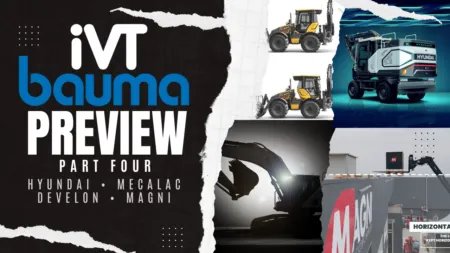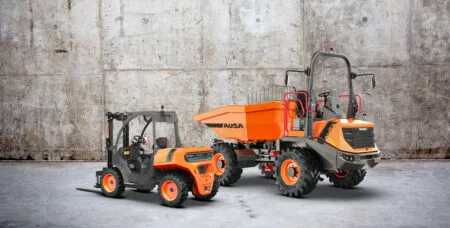Mammoet’s SK6000 – billed as the strongest land-based crane in the world – has now successfully completed testing for fully electric operation, in a project undertaken by the OEM in partnership with power supply specialist Bredenoord.
The electric SK6000, first announced in August, is now ready to operate directly from grid power – or, at sites without power network access or with supply stability issues – via batteries or hydrogen generators. Designed primarily for off-shore wind farm construction, the first SK6000 is expected to be deployed early in 2025.
With a main mast height of 171m, and a total lifting height of 274m with a fixed jib attachment, the converted SK6000 certainly has a claim to be the tallest electric vehicle in the world, with limited mobility afforded by dedicated tracks that the vehicle runs on.
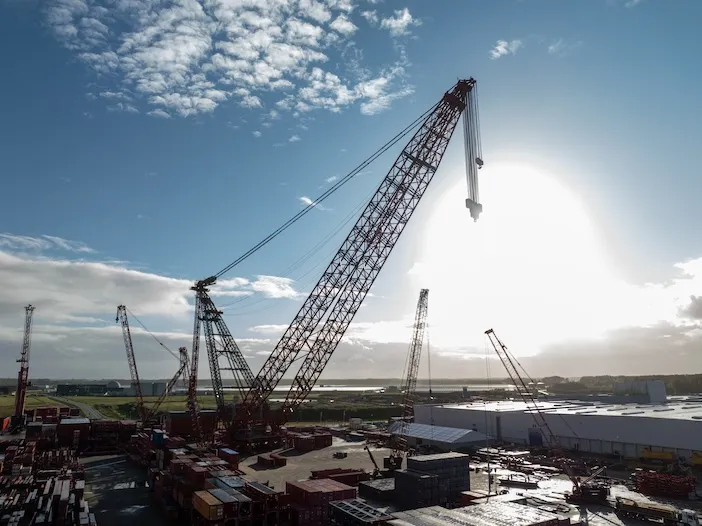
Testing was carried out using two 600kWh Battery Boxes from Bredenoord, connected in series to deliver 1,200kWh; around the same output as 20 electric cars. Battery packs capable of operating the SK6000 are becoming widely available, in standard 20ft shipping container form factors, which can easily be mobilized to and from site.
Connection took a day shift, in parallel with test weight reconfiguration activity. This proves that the use of batteries has minimal impact on site operations.
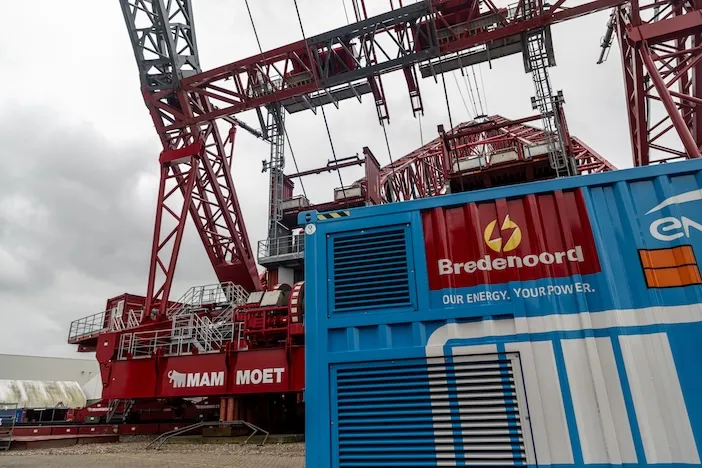
“Thanks to this test we can now say that the SK6000 operates fully zero-emissions on-site,” says Niek Bezuijen, global sustainability advisor at Mammoet. “Electrification isn’t a matter for the future of heavy lifting – it is needed now, and through innovations like this Mammoet can help its customers lead on safety, efficiency, sustainability and cost”.
By plugging into a medium voltage network – commonly available in heavy industry – the SK operates directly from the grid. At port facilities, so-called ‘shore power’ connections, typically used to prevent cargo vessels idling at port, are capable of powering the crane.
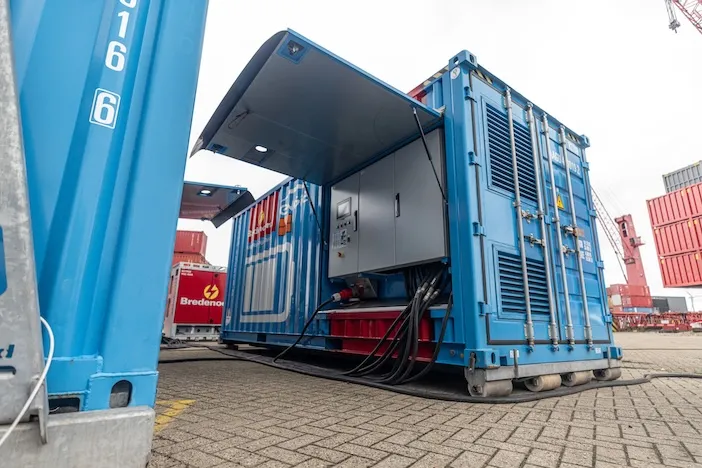
Battery functionality offers a further option, with the additional benefit of being chargeable from lower power networks. The significant periods of time between individual ring crane lifts allow the chance for battery packs to recharge.
Hydrogen generators can be used where neither grid power nor battery power is an option, for example at remote sites without significant infrastructure.
With SK6000 electric functionality confirmed, Mammoet can now offer a fully zero-emission, low noise marshalling service to customers in the offshore wind sector.
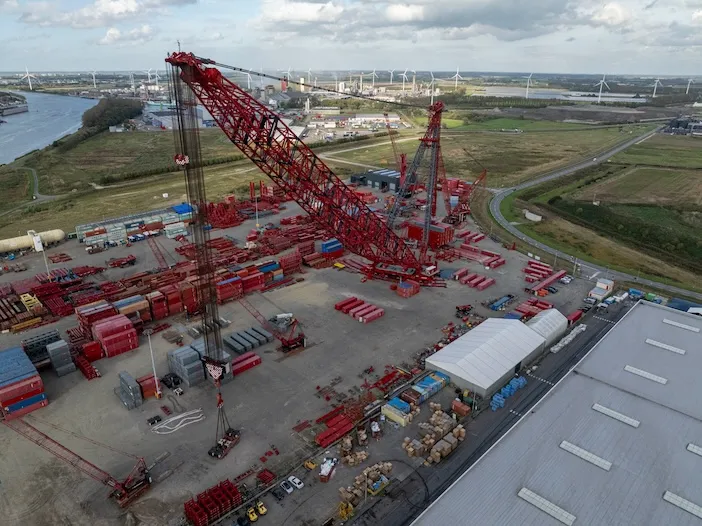
Oil and gas projects benefit from complete elimination of carbon impact during the heaviest lifting scopes, at the same time as realizing the largest possible economies of scale from modular construction methodologies.
In the nuclear sector, reduced noise levels will enhance safety levels at complex new build sites while allowing projects to deliver low-carbon energy in a sustainable way.
This project was part-funded by the Subsidieregeling Schoon en Emissieloos Bouwmaterieel in the Netherlands; a research and demonstration fund to develop zero-emission initiatives at construction sites.


